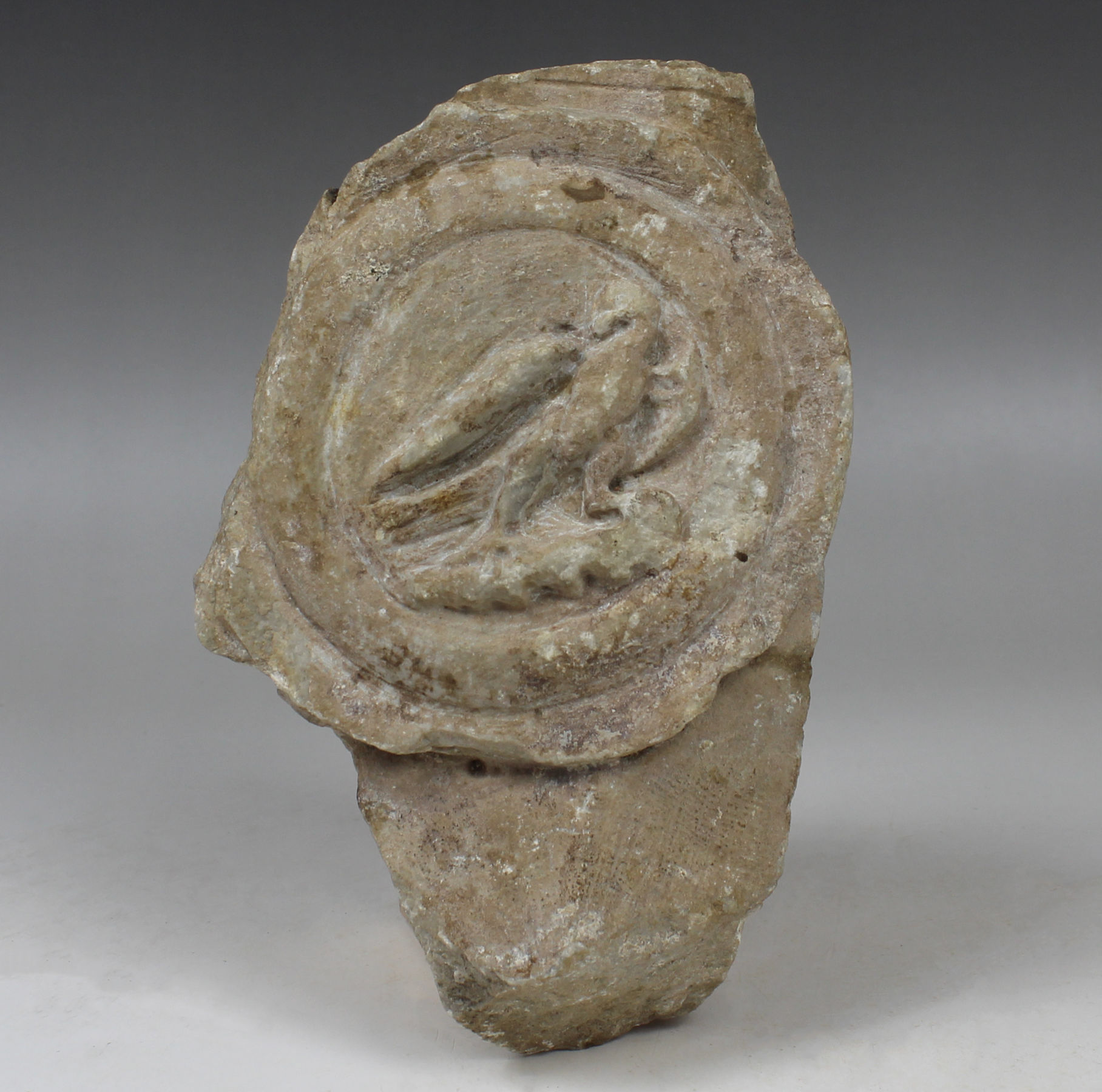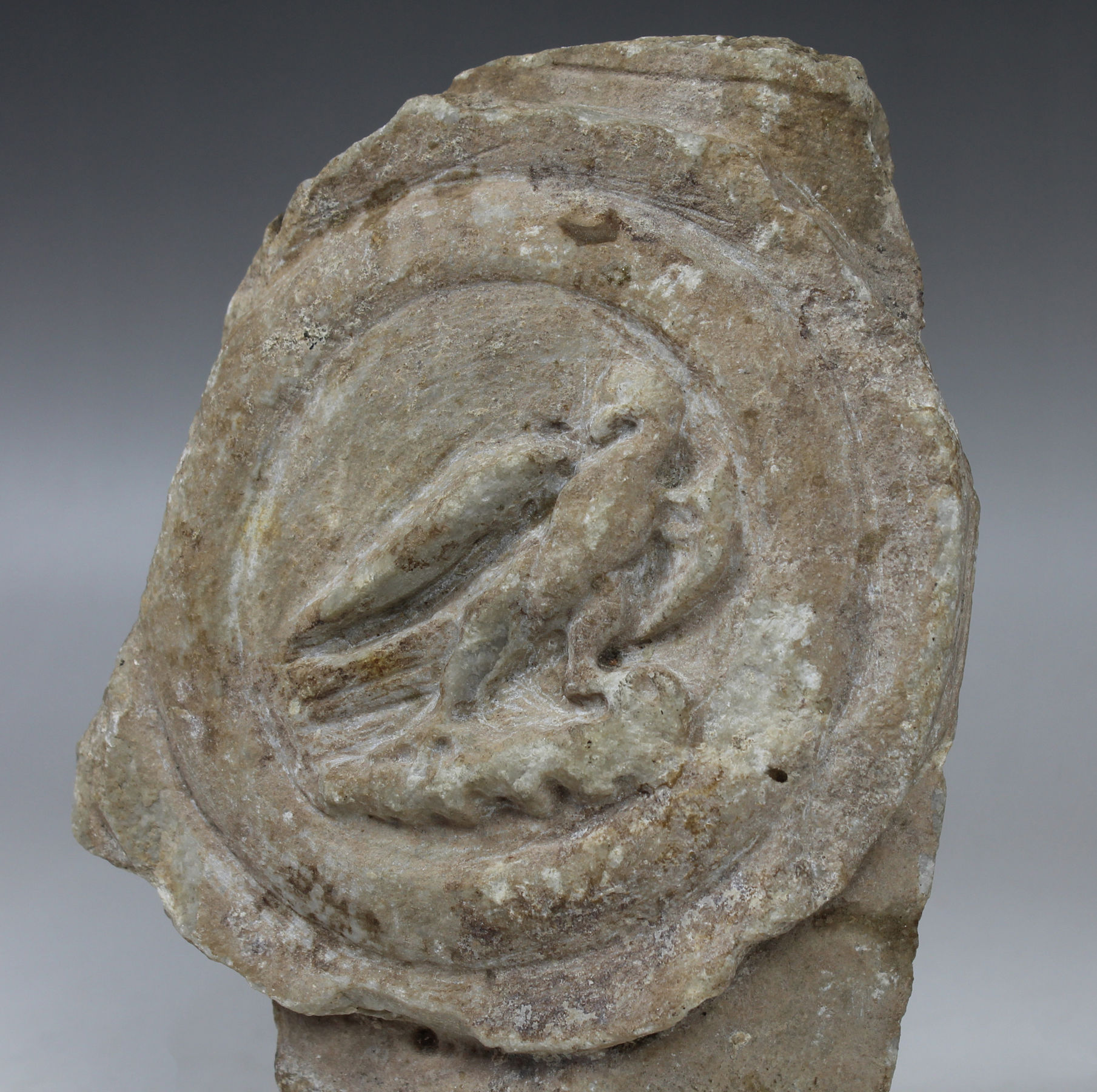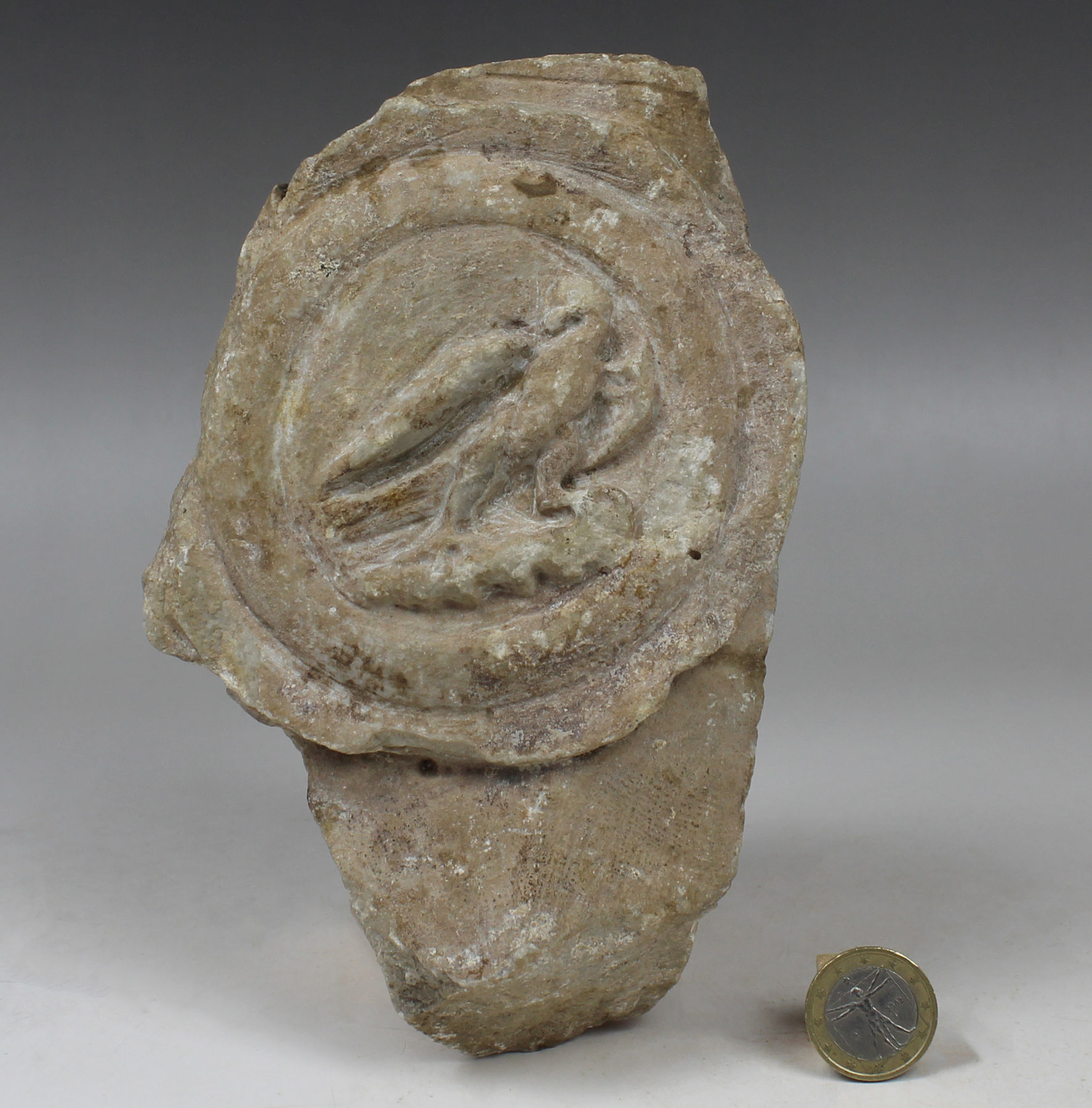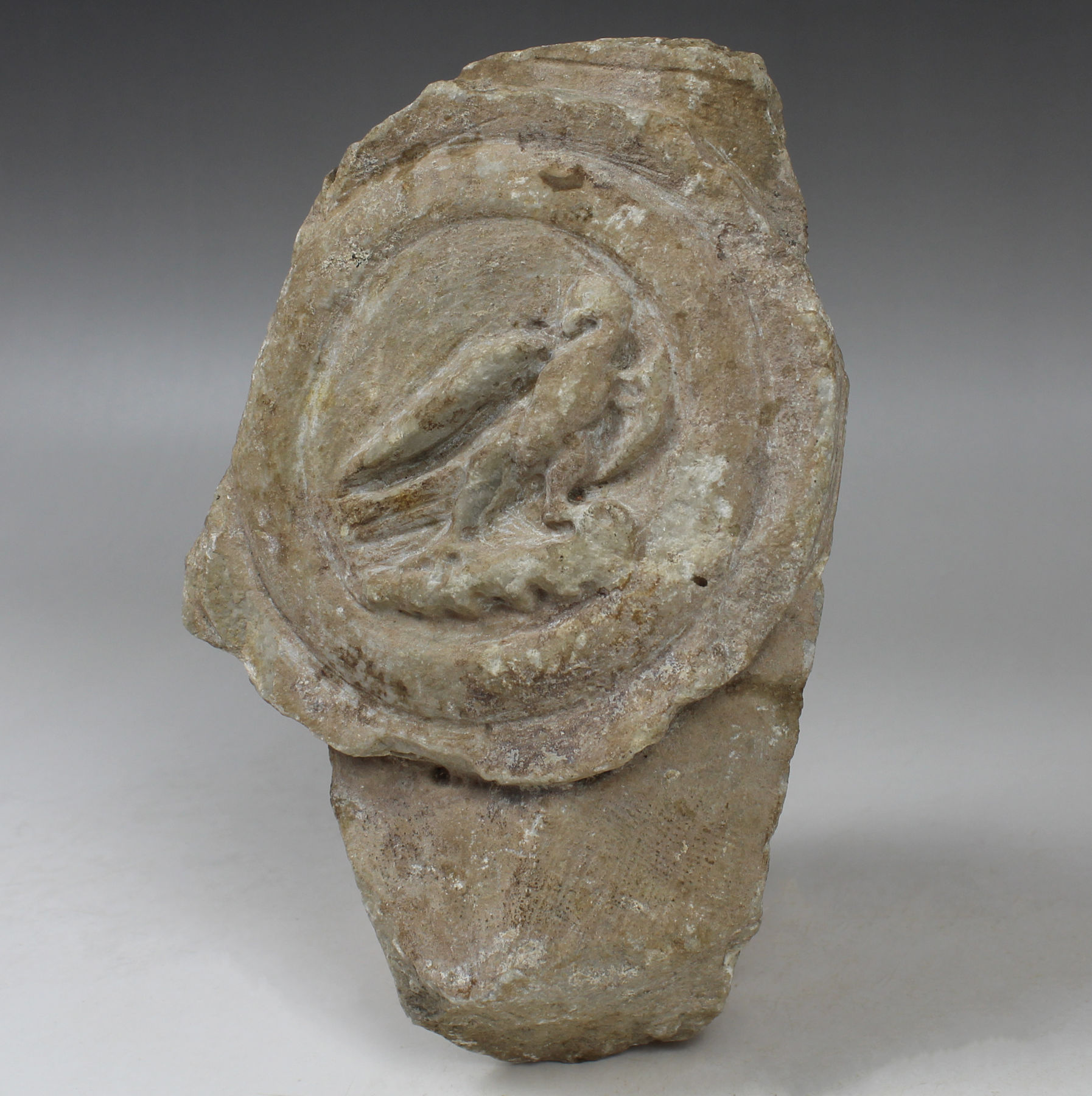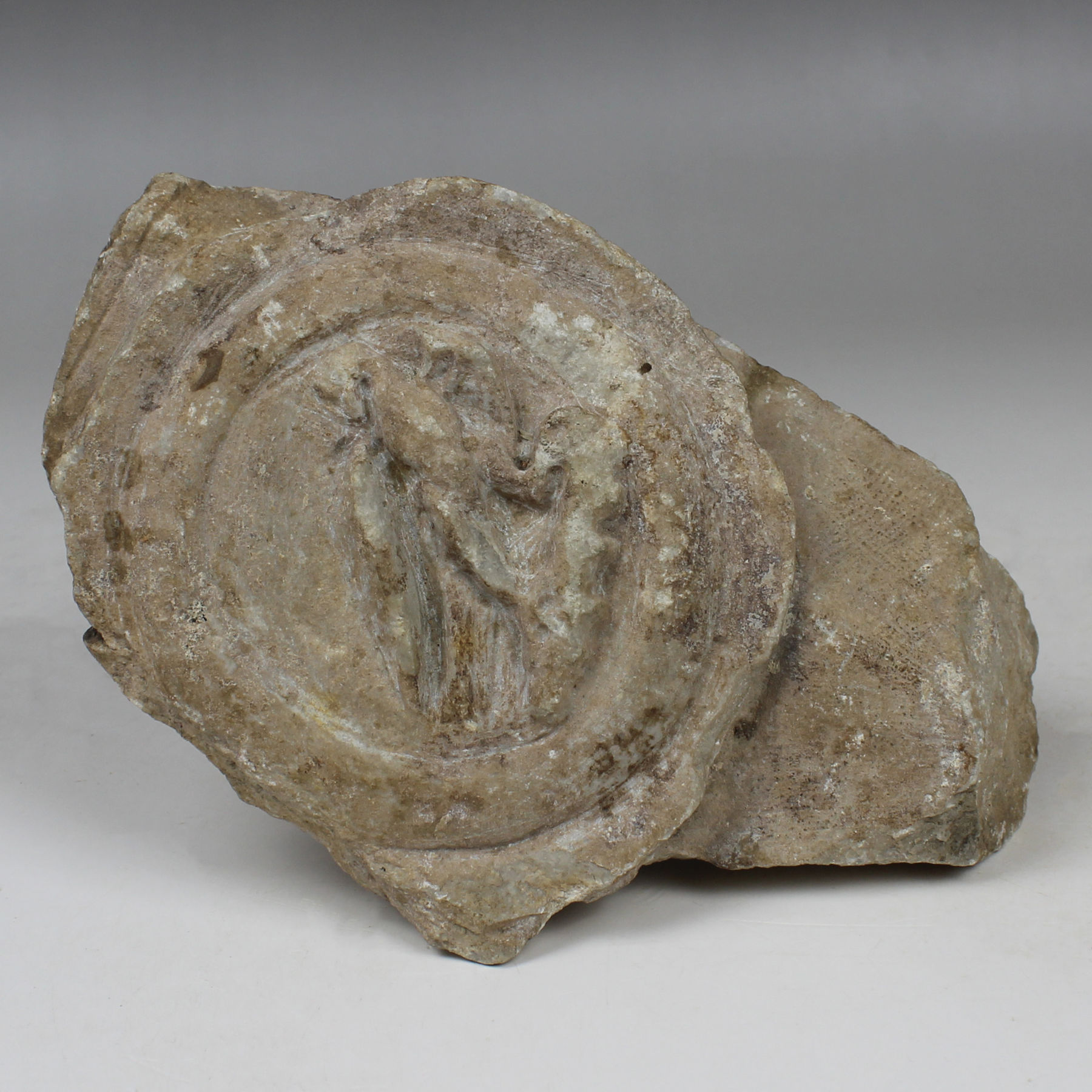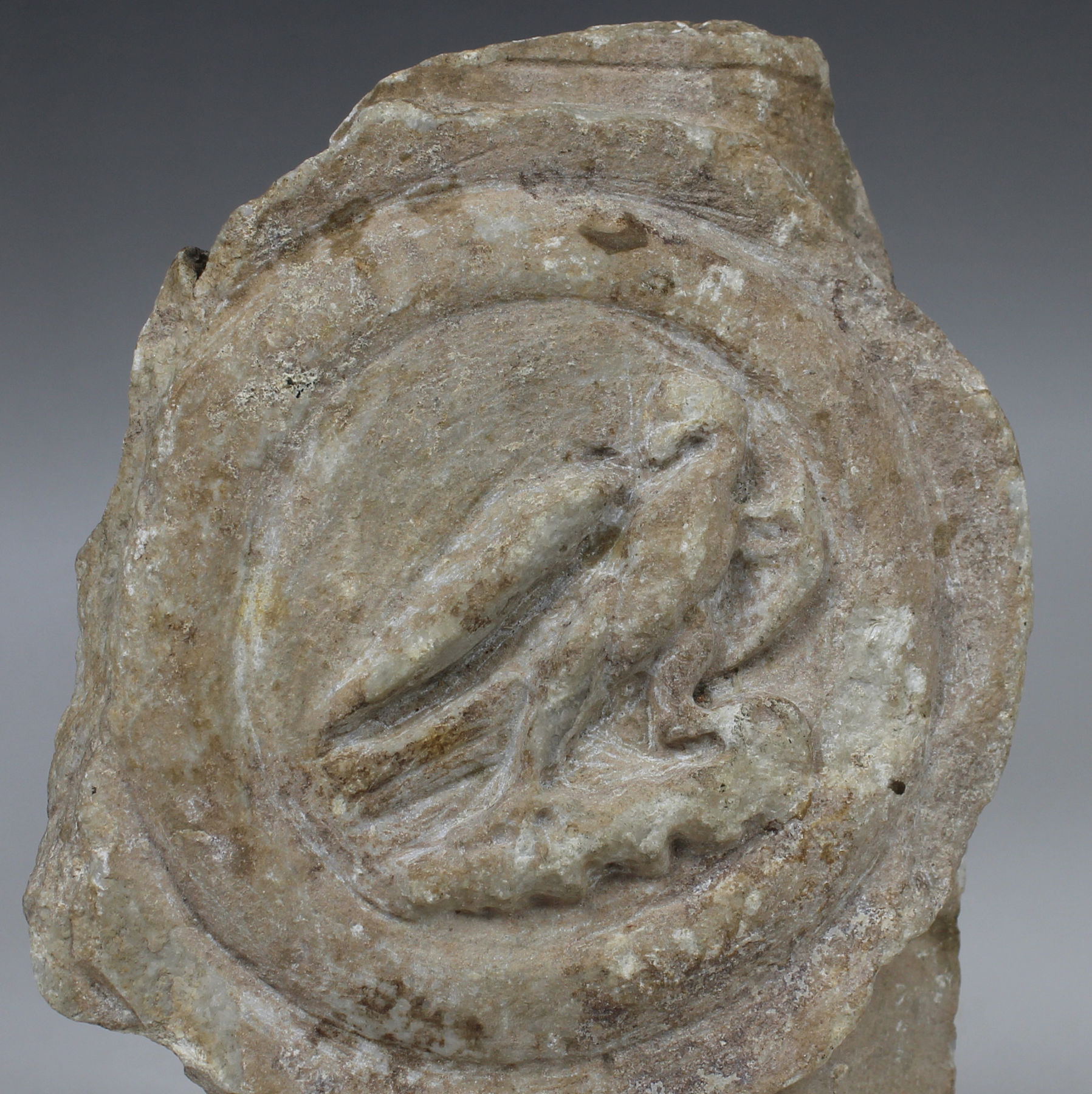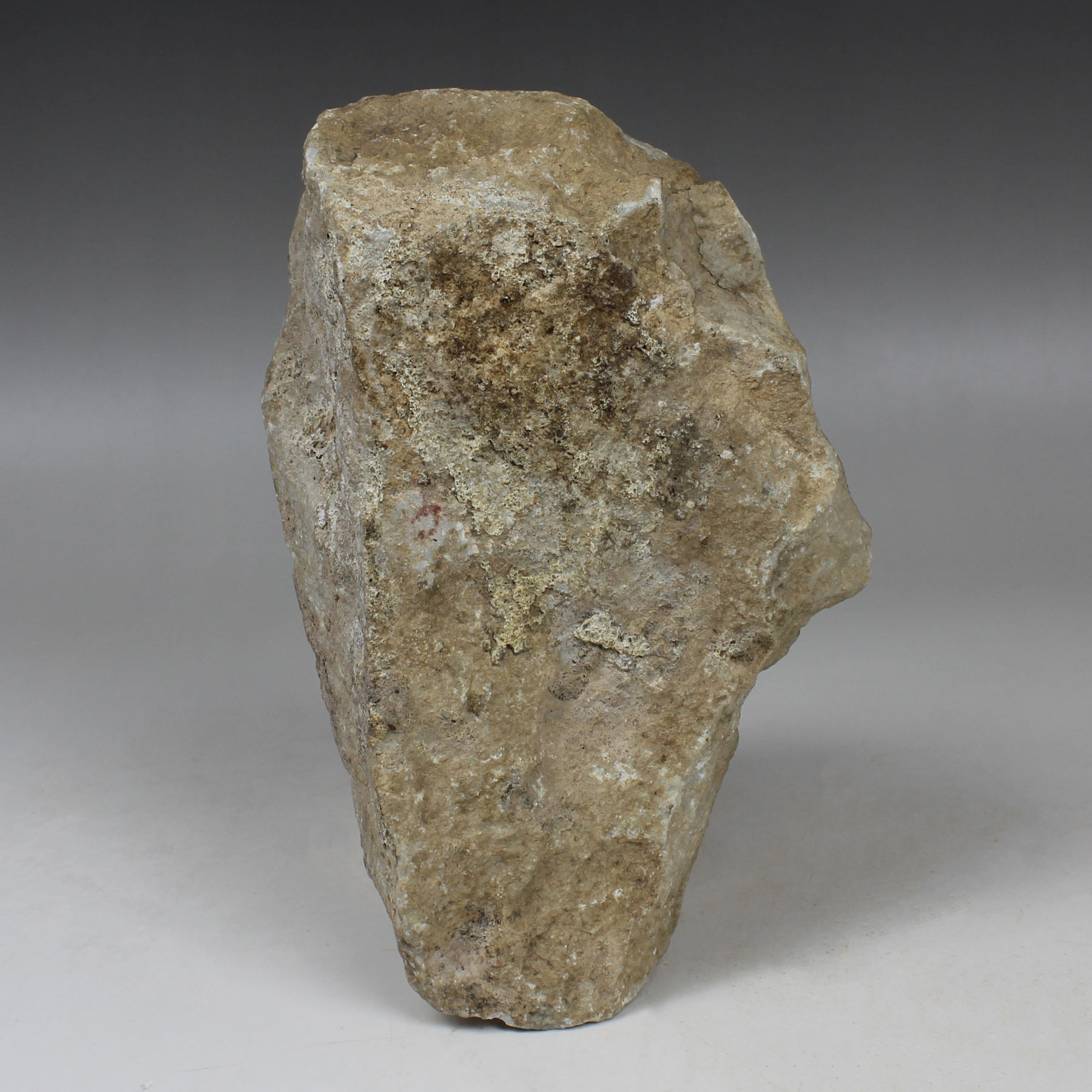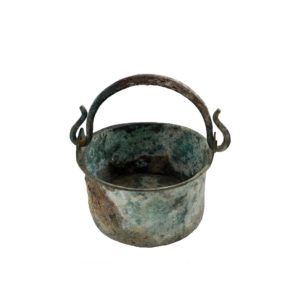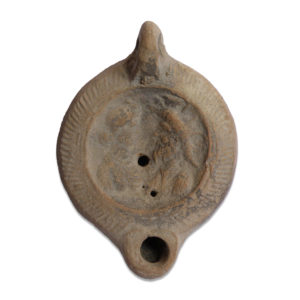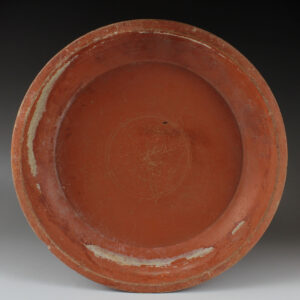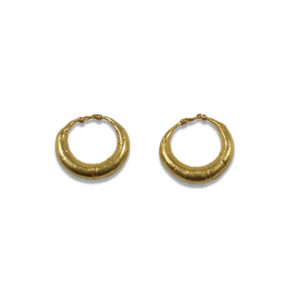Description
| ITEM | Lorica thoracata depicting a medallion with eagle, fragment |
| MATERIAL | Marble |
| CULTURE | Roman, Smyrna |
| PERIOD | 1st – 2nd Century A.D |
| DIMENSIONS | 175 mm x 115 mm x 52 mm |
| CONDITION | Good condition |
| PROVENANCE | Ex Paul Gaudin collection, Paris 1858 – 1921 Versailles, archaeologist, engineer and great patron of the Louvre Museum; Acquired between 1894 and 1905 and by family descent. |
The aquila, or eagle, is one the most enduring symbols of Roman civilization. While different animals and mythological creatures served as meaningful signifiers throughout the Republic and Imperial eras, the eagle continuously symbolized power and authority. The eagle was considered majestic and transcendent, to the point that live birds were often caged on emperors’ funeral pyres. Once they broke free and flew skyward, the Romans considered it a manifestation of the deceased emperor’s transition to godhood.


